The new standard in high performance IRMS

Why SIRIX?
Solving isotope ratio puzzles one step at a time
Here at Isotopx we have a proud history in providing isotope ratio solutions. We consider ourselves to be the innovators in the industry, proven by our unique ATONA® and ZEPTONA technologies. By leveraging our technologies and platforms we can offer a wider range of mass spectrometer types – all designed and built with the goal of ultimate precision, ease of operation, and excellent day-to-day reliability. The SIRIX from Isotopx is a perfect example of this; it’s an instrument that benefits from our existing technologies such as TIMS and noble gas MS, yet is designed for a different set of equally demanding isotope ratio applications.
SIRIX is a large radius isotope ratio mass spectrometer (IRMS). It has higher sensitivity and greater resolution that contemporary instruments, all courtesy of our existing ion optics platform. Why do this? Because there are scientific challenges in the world of IRMS where sensitivity and resolution can offer huge benefits, particularly if you are analysing isotopologues or very small carbonate samples. If these are your challenges, SIRIX could be the answer.
Imagine if…You could achieve better than 10 ppm precision for 48 CO2 / 44 CO2, within 100 minutes
In recent years measurement of isotopologues or “clumped isotopes” has become widespread. Focus is on the analysis of CO2 where isotopes of mass m/z 44, 45, 46, 47, 48 and 49 are of interest. The new SIRIX mass spectrometer from Isotopx features advanced multicollector technology derived from the Phoenix Thermal Ionisation MS. It also includes the ATONA® amplifier in combination with a high sensitivity, high mass resolution spectrometer design. The result is a powerful, versatile, sensitive, stable isotope mass spectrometer that is intuitive to use, and can also be optimised for the most exacting applications.
SIRIX includes up to 9 individually movable Faraday collectors, allowing complete fl exibility in the choice of isotope analysis. The ion optics are based on the same magnet design as the Phoenix TIMS. A large 90° 27 cm radius magnet provides sufficient mass dispersion to allow for simultaneous multicollection of all CO2 isotopes. The wide flight tube ensures no backgrounds from ion reflections under the minor isotopes. Interferences from hydrocarbons are eliminated from peak centres due to the high mass resolution (>500, 10% valley). A mass resolving power of 5,000 is obtainable.
The large dynamic range and low noise of the ATONA® allows the accurate and precise measurement of ion signals of >1e-7 A down to <1e-17 A on the Faraday array, essential for CO2 analysis.
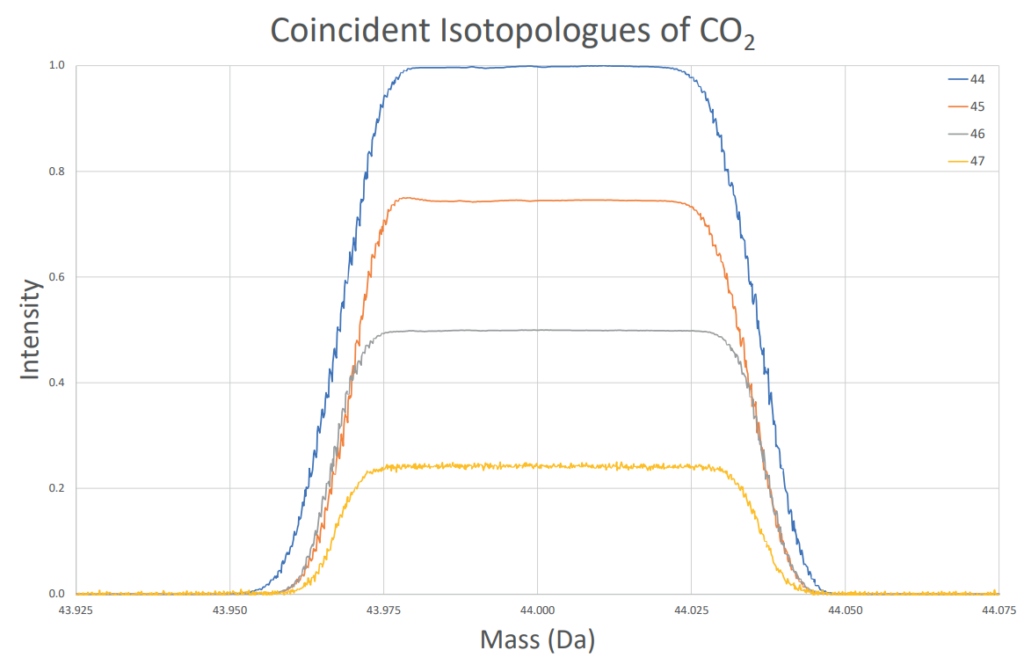
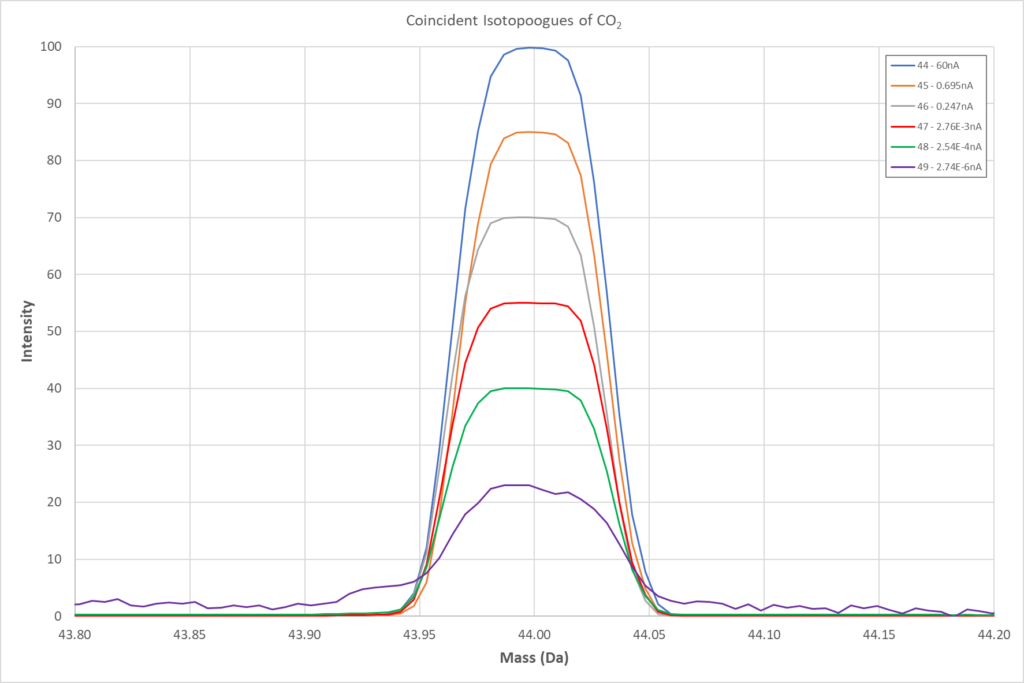
analysed for 6,000 1 s integrations. This length of time is comparable to sample on-beam time for clumped isotope analyses
Imagine if…You didn’t need to sample-standard bracket, effectively doubling your sample throughput
Existing instrumentation requires switching between sample and reference gas of the order of every 30 s to continually “calibrate” the instrument. Each switch between sample and reference gas has a
corresponding delay/settle period for the beam intensity to stabilise. As a result, the duty cycle of sample gas can be well below 50%, limiting productivity.
With the development of the ATONA® amplifier system and new extended range ATONA®, Isotopx has successfully managed to improve performance and stability of the amplifier system. The exceptionally quiet and stable amplifier allows for extended measurement times of sample gas, without the need for repetitive calibration with a reference gas, or calibration of different gain resistors
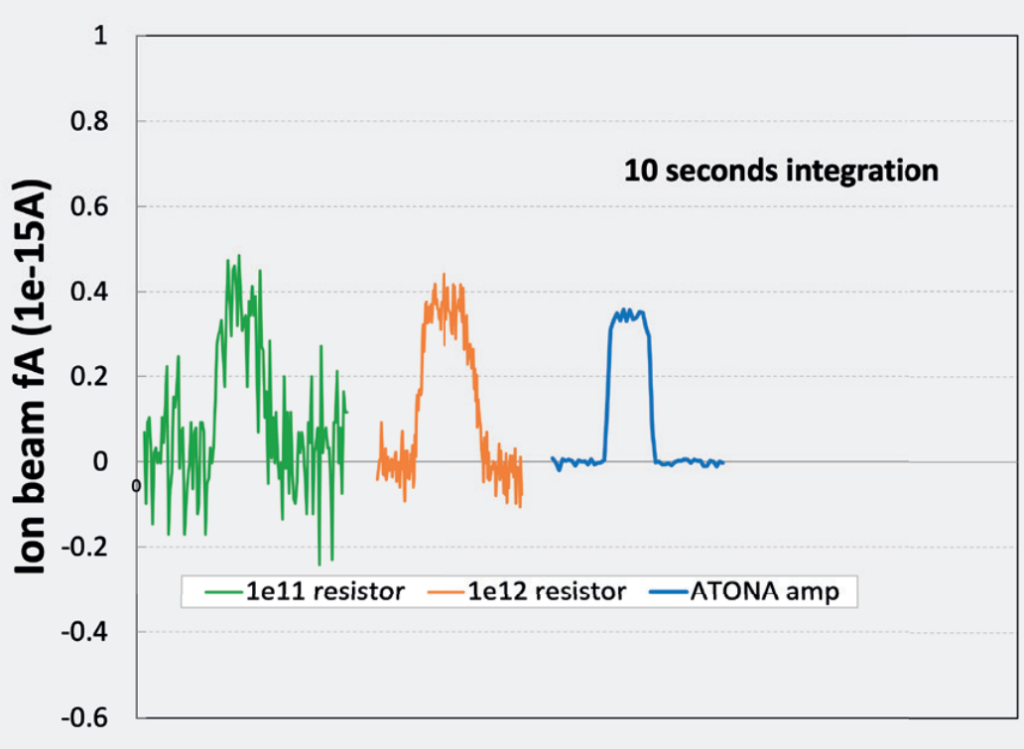
the ATONA® amplifier peak exhibits much lower noise characteristics than 10e11 or 10e12 resistor amplifier peaks.
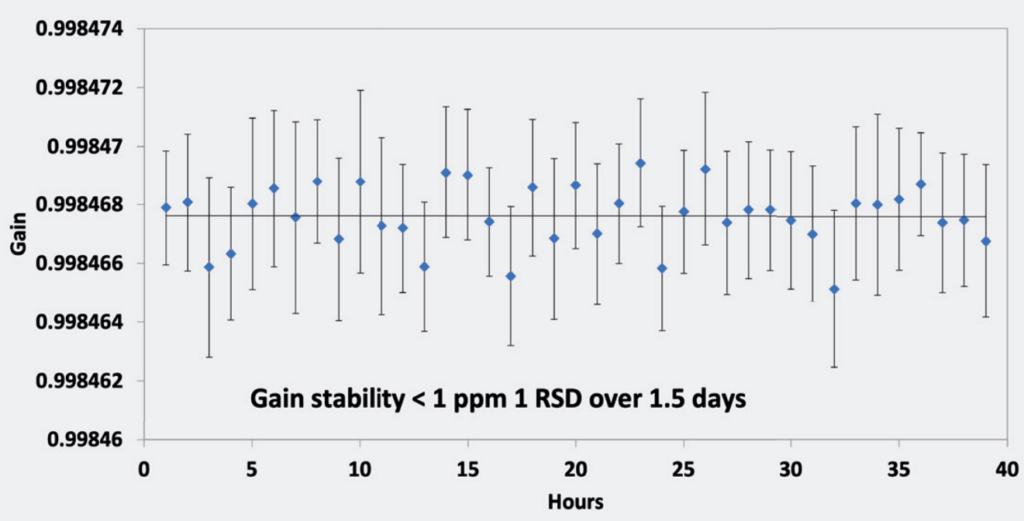
Imagine if… You didn’t need to calibrate your detectors, or choose your resistor according to application or beam size
The unique ATONA® amplification technology from Isotopx has eliminated the need for a “feedback resistor”. The outcome is a significant reduction in amplifier noise, a dramatic increase in dynamic range, rapid amplifier decay, and improved baseline and calibration stability. The new extended range ATONA® is fitted as standard and increases maximum signal measurement to 200 nA on channel 1 and 20 nA on channels 2 to 9. This allows the instrument to run with much greater signal intensity. Correspondingly the time taken to achieve the required precision is much shorter, increasing sample throughput. The ATONA® amplifier also exhibits extremely stable baseline measurements over extended periods of time.
The dynamic range of the ATONA® amplifier is far wider than that of traditional resistive amplifiers. The image below shows a dynamic range comparison of resistive amplifiers and ATONA® referenced to a 1e11 Ω amplifier.
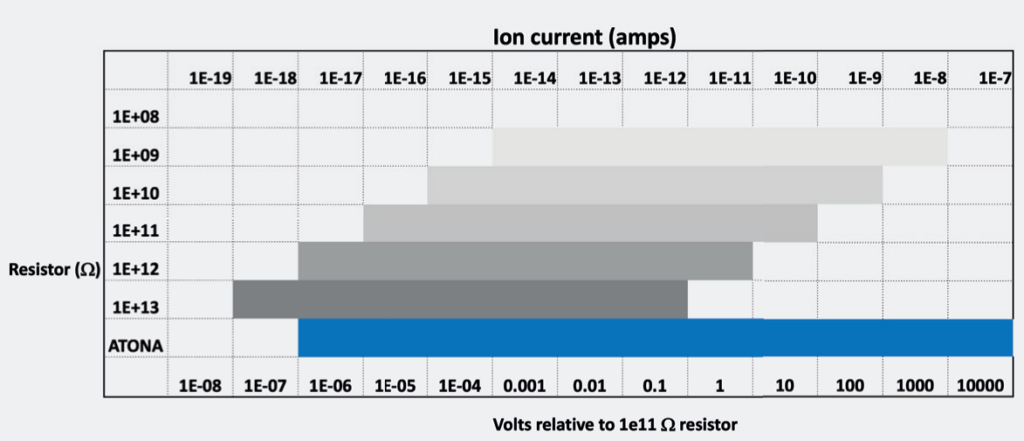
1e11 Ω amplifier
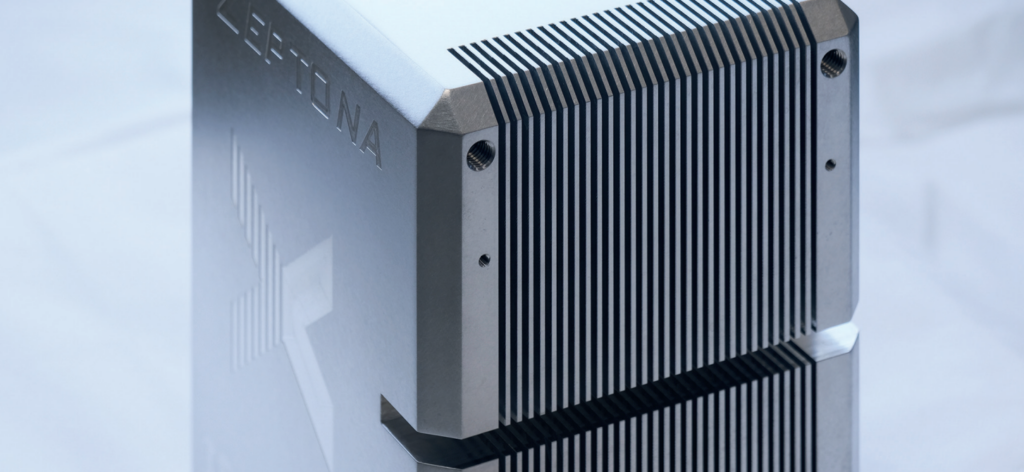
adjustable source slit.
SIRIX dual inlet
Naturally, there are isotope ratio applications where the highest precision and long-term reproducibility are of the utmost importance. Many IRMS users with these requirements choose to use a “dual inlet” device. In simplistic terms this is an automated inlet device that allows a direct comparison between a known standard and unknown samples, to the benefit of measurement precision and accuracy. The technology has been widely used for several decades and is well understood.
The dual inlet from Isotopx combines proven design with today’s workflow techniques and analysis methods. The all-stainless steel construction provides long life operation of the valves which is combined with a dual turbo-pumped vacuum system to maintain sample integrity. Two adjustable gas volumes are provided as standard, traditionally referred to as the sample and reference bellows. These gas volumes have been engineered with exceptionally tight tolerances to guarantee reproducibility. A non-adjustable micro volume, for small samples, is available and attaches directly to the sample valve block. Valves and pipework flow path have been minimised to reduce any dead volume.
Operation of the dual inlet is fully controlled by the SIRIX software. During normal operation, the dual inlet runs in automated mode. The superior performance of the ATONA® detector system is leveraged
to allow real-time rebalancing of the bellows and is no longer dependent on the integration period of the analysis. Manual valve operations, vacuum control and dual-inlet status and are controlled through an
inlet mimic within the tune window.
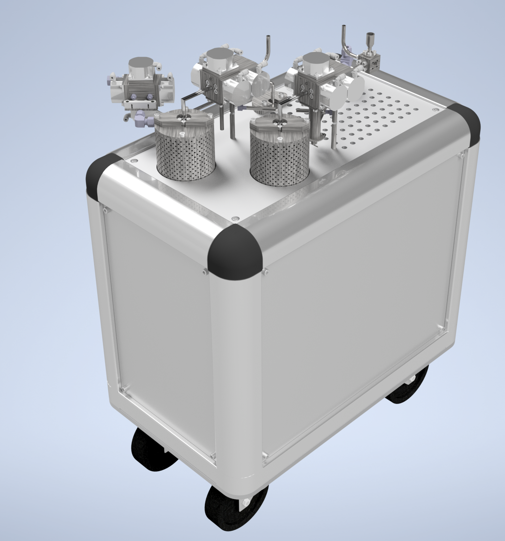
Download brochure
Click here to download the SIRIX brochure